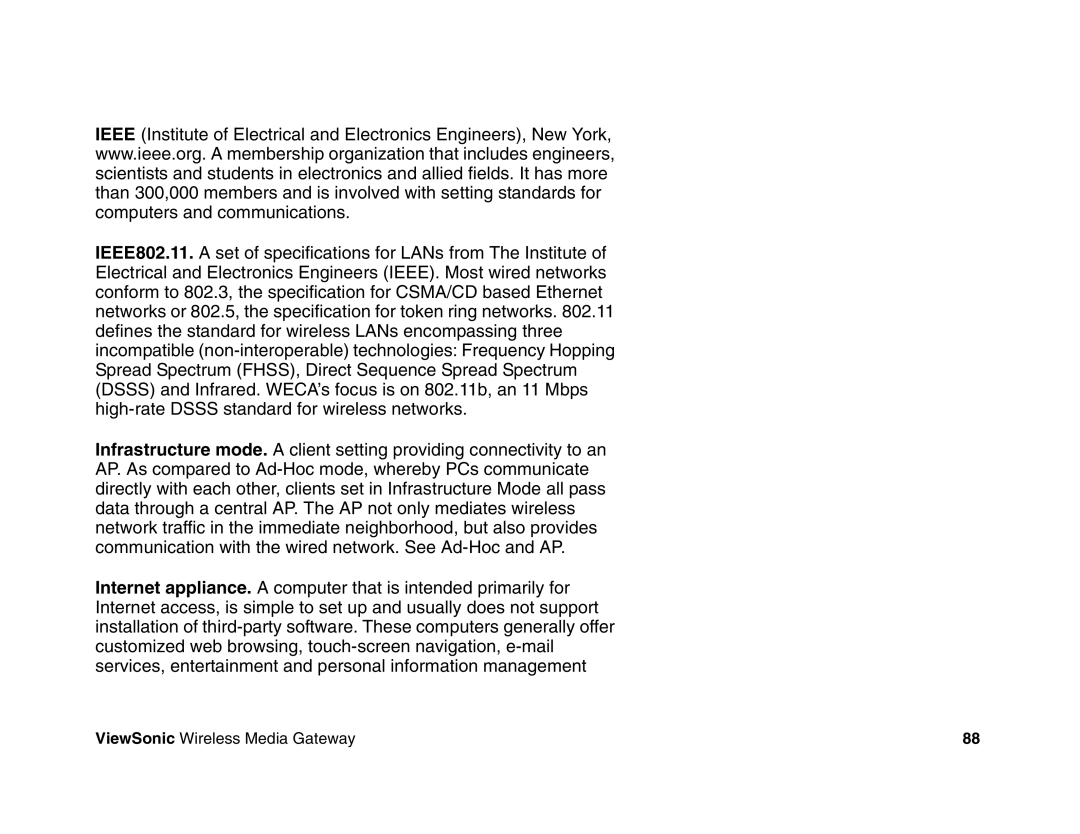IEEE (Institute of Electrical and Electronics Engineers), New York, www.ieee.org. A membership organization that includes engineers, scientists and students in electronics and allied fields. It has more than 300,000 members and is involved with setting standards for computers and communications.
IEEE802.11. A set of specifications for LANs from The Institute of Electrical and Electronics Engineers (IEEE). Most wired networks conform to 802.3, the specification for CSMA/CD based Ethernet networks or 802.5, the specification for token ring networks. 802.11 defines the standard for wireless LANs encompassing three incompatible
Infrastructure mode. A client setting providing connectivity to an AP. As compared to
Internet appliance. A computer that is intended primarily for Internet access, is simple to set up and usually does not support installation of
ViewSonic Wireless Media Gateway | 88 |
